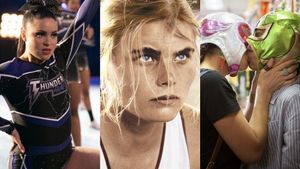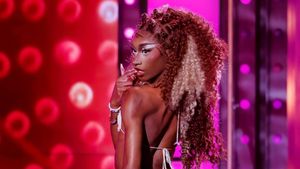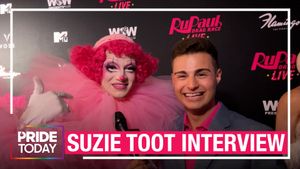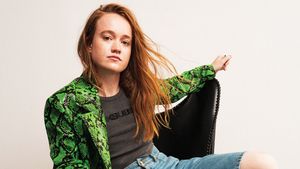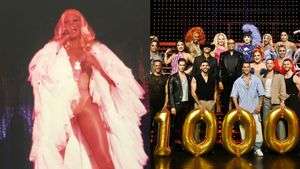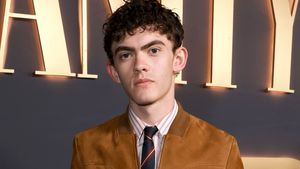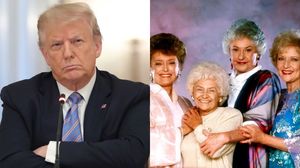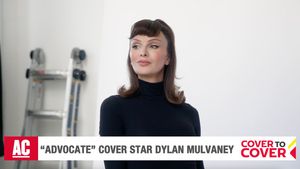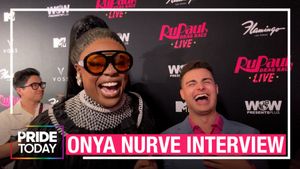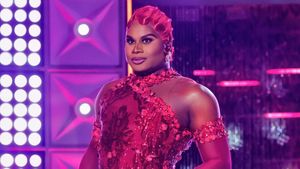Society walker Jerome Zipkin, silent screen star and top decorator to the power elite William Haines, godmother and notorious lesbian screen star and seductress Alla Nazimova, buddies Claudette Colbert and Robert Taylor, and even Sen. Joseph McCarthy's henchman and closeted gay man Roy Cohn: all friends of Nancy.
And that doesn't include the other decorators, fashions designers, and various minions that a woman like Nancy Reagan would use as part of her team of self-creation.
Silent screen star William Haines had given up his top-billing position as America's boy next door on-screen because he refused to ditch his lifelong companion, Jimmy Shields. Haines was openly gay in a time that put him at great risk to do so. But Haines was willing to start over and did so quite spectacularly becoming the most desired and powerful decorator in Los Angeles.
Haines was bored by politics and claimed to have no interest, but he did have an interest in powerful and rich clients. He was also adept at taking the young wives of up-and-coming influencers in politics and corporate America under his wing to show them how a hostess succeeds, how an important wife dresses, and most importantly which friends to assemble.
In William J. Mann's excellent biography of Haines, Wisecracker, he spools out the circuitous road to the friendship between Nancy and Billy.
During the Kennedy years, conservative Republicans began grooming Ronald Reagan for political office. Nancy was then a Pacific Palisades housewife with little social standing. Her own film career had gone nowhere, and her husband was only doing television, so the promise of being married to a rising political star energized her.
Nancy's role model and idol was Betsy Bloomingdale. Nancy began using Betsy's hairdressers and most importantly her gay fashion designer Jimmy Galanos, the first big member of Team Nancy. Betsy was also in with the gays, and soon Nancy was being seen around town on the arm of Jerry Zipkin, the man most trusted with the wives of the rich and powerful. She was fiercely anticommunist, and so it followed that she took up with Roy Cohn as well.

She wanted very badly to have her home decorated by Billy Haines, Betsy's decorator, but she was still not in a position to afford that. Instead she and Ron soon began socializing with the gay couple.
In 1967, when Reagan became governor of California, the victory party was held in the home of William Haines and Jimmy Shields. Soon Nancy used Jimmy Shields as her shopping buddy. Still unable to afford the high prices and super swank of the Haines look, she would take Jimmy along on a shopping junket to get his advice and use his articulate tastes.
All this fraternizing with gay men must have put Ronald Reagan in a bit of a quandary. His campaign was focused on ending "moral decline." Then a bomb dropped: In the fall of 1967 a 'homosexual clique" was discovered in Reagan's administration. On advice, Reagan promptly fired all the men involved. Reagan trotted out the standard "abomination in the eyes of the lord" tropes. One wonders how Billy, Jimmy, and the rest of Team Nancy felt about that.
Even worse was Nancy being quoted as calling homosexuality a "sickness" and an "abnormality," fresh from a gay date with Jerome Zipkin.
Maybe more curious than Nancy's ability to turn on a dime was the seeming imperturbability of all the gay Reagan cohorts. Well, except, one assumes, for the enormously self-loathing Roy Cohn. It made perfect sense to him.
And not much changed over the years. Reagan's nonresponse to AIDS is well documented. Nancy's self-appointment as a society queen and her legendary spending only seemed to raise her value in a camp sense. In Bob Colacello's memoir of working with Andy Warhol, Holy Terror, he writes of the thrill of securing Nancy Reagan for a December cover for Interview magazine.
In 1981, Ron Reagan Jr., Nancy and Ron's ballet dancer son, was a contributing editor. Even more embedded was Ron Jr.'s wife, Doria, as she was Colacello's assistant. But it wasn't Doria who secured her mother-in-law for the cover, but Nancy's gay buddy Jerry Zipkin. White House associate Mike Deaver liked the idea when Zipkin approached him. He saw it as an opportunity to make Nancy look young and hip as well as pull focus away from Nancy's much publicized expenditure of over 200K for White House china.
Colacello saw it as a coup. Warhol was not particularly excited about it and wondered why he even had to go. Colacello was famously diplomatic and adroit at befriending the upper crustiest of conservative society. Nancy saw no problem in an intimate interview with her and Bob and Doria. It took some wrangling, but finally everybody saw the wisdom -- and the publicity value -- of having the king of pop art and the self-appointed queen of the United States in the same room.
Colacello then writes of the panic that set in: "The day before our trip to Washington, Jerry [Zipkin] called. He was in a state.'I just had this horrifying vision,' he said, 'of Andy starting off the interview with one of those crazy questions of his, like "How big is the president's cock?" So please, for my sake, no sex questions.'"
Colacello was able to corral in Warhol, and while there were more than a few odd and awkward moments, Nancy kept her cool. She was even happier the next day at the photo shoot with legendary gay photographer Cris Alexander. She liked the images so much she called Colacello for copies to make a Christmas card.
Nancy will live on in the gay imagination as one of the great bitch goddesses: Nancy Reagan red, the astonishingly expensive gowns, the regal distance. But I recall seeing Nancy 20 years or so ago. I was in Gelson's supermarket in Studio City, in the San Fernando Valley. I was near the entrance and I watched a limousine pull up outside. Two tiny creatures in size less-than-zero day suits and giant sunglasses came in. I watched as Nancy and Betsy Bloomingdale looked about for a moment as if they didn't know how this supermarket thing worked. Then they saw the rows of shopping carts. It took the two of them to dislodge one. But then once dislodged, they both stood shoulder to tiny bony shoulder, hands grasping the cart handle, and in unison the made their way into the bright market.
[RELATED: "Remembering Nancy Reagan, Her Involvement in AIDS Crisis"]
CHRISTOPHER HARRITY is the interactive art director at Here Media, parent company of The Advocate.


















